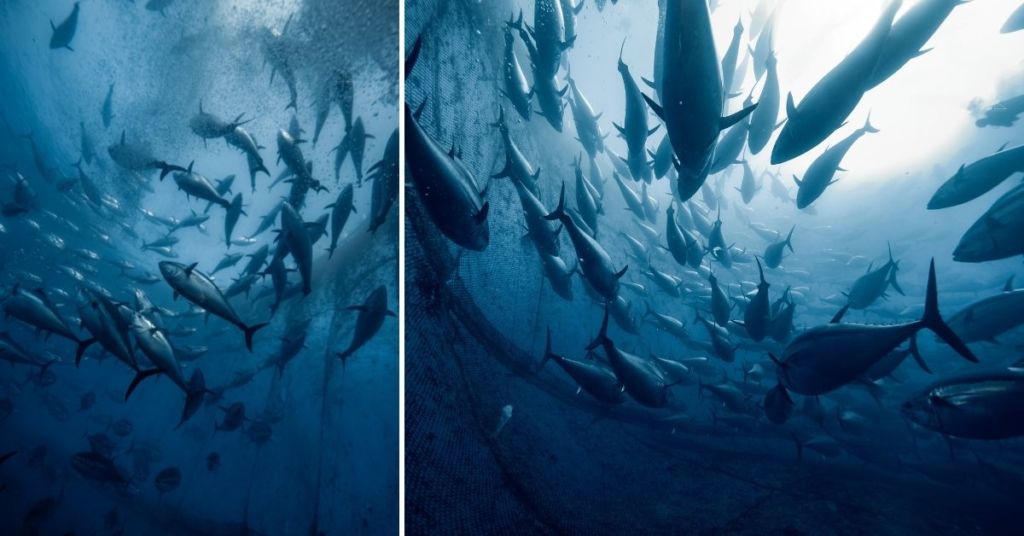A Deep Dive Into Malta’s Tuna Farms: This Is Where Your Bluefin Comes From
From the traditional Maltese ftira to a juicy tuna steak and fresh sushi to seafood salads, tuna makes up an important part of our Mediterranean diet. In fact, wild-caught bluefin tuna is one of the most sought-after seafood dishes around.
Malta happens to be one of the only places in the world where you can scuba dive in the farms these fish are bred and kept in. Lovin Malta went inside a bluefin tuna pen in the Maltese waters, off the coast of St Paul’s Bay, to take a deep dive into the tuna farming industry.
AJD Tuna of Azzopardi Fisheries is Malta’s largest tuna company out of six farms in total. The company has the capacity to produce 3,500 metric tonnes of fish per year, making it one of the top three Mediterranean producers of bluefin tuna.
Today, the industry accounts for approximately 1% of Malta’s GDP.
Bluefin tuna are sold to tuna farms like AJD Tuna after they are caught in the wild. The fish are then kept in ‘pens’, large underwater cages, and fattened with lots of feed.
Most of the tuna farmed in Malta isn’t consumed or sold here, as almost all of the bluefin tuna is exported to Japan and the rest of Asia. The tuna are exported and sold with high profits on the Japanese market at around €35 per kilo.

The company has 24 pens full of tuna, which are around 40 metres deep and 50 to 90 metres wide.
Each pen has hundreds of tuna swimming inside, varying in size and weight. One tuna fish can reach a size of up to 3.7 metres and weigh 450 kilograms.
The fish are big, fast and powerful. As the tuna circle around and swim in one direction, they cause a vortex in the centre of the pen, sucking divers to the middle.
But with some extra caution, swimming inside the bluefin tuna pen is super safe. The fish easily manoeuvre around divers, and the chances of bumping into one are slim.
The bluefin tuna season opens around May or June, and the fish are bred until the quotas are met and the authorities close the season. In general, the fish are killed and sold in November and December. After the fish are harvested, a few are kept to use for breeding purposes.
In Malta, however, the fresh bluefin tuna courted controversy in the past, particularly after it was linked to a €25 million illegal tuna trade across Europe, with leaked Spanish police documents implicating Mare Blu, MFF, and the Fisheries Directorate’s Director-General Andreina Fenech Farrugia in the scandal.

And there’s more to the tuna industry. Besides the illegal trade and dreaded sea slime caused by tuna farms, these bluefin tuna are considered over-exploited worldwide.
The stock has been overfished due to the high demand for fresh tuna in the west and sushi and sashimi in Japan.
Bluefin tuna is caught on a massive scale in the Mediterranean, to then be sold to tuna farms like AJD tuna, where they are fattened in cages until they’re slaughtered.
The catching of tuna also results in large amounts of by-catch. That means that other marine life gets caught in the fishing nets, whose lives end up being wasted as they were caught unintentionally. This can also have negative effects on the nearby ecosystems.

Not only are tuna overfished, but they also require a huge amount of wild fish for feed. The fish are fed a mix of high-protein feed, made from imported and locally-caught fish like anchovy, mackerels and squid, every morning.
Each pen is fed 10 tonnes of fish every day. For reference, that’s as heavy as an African bush elephant or a light military tank. Needing huge amounts of resources, the practice of farming tuna is highly unsustainable.

These days, eating fish in a sustainable way isn’t easy. If you are looking to consume alternative seafood from the overfished bluefin tuna, consider eating locally caught skipjack tuna, mackerel or squid. According to Maltese NGO fishfortomorrow, these fish are fit for sustainable consumption.
Tag someone who loves tuna
